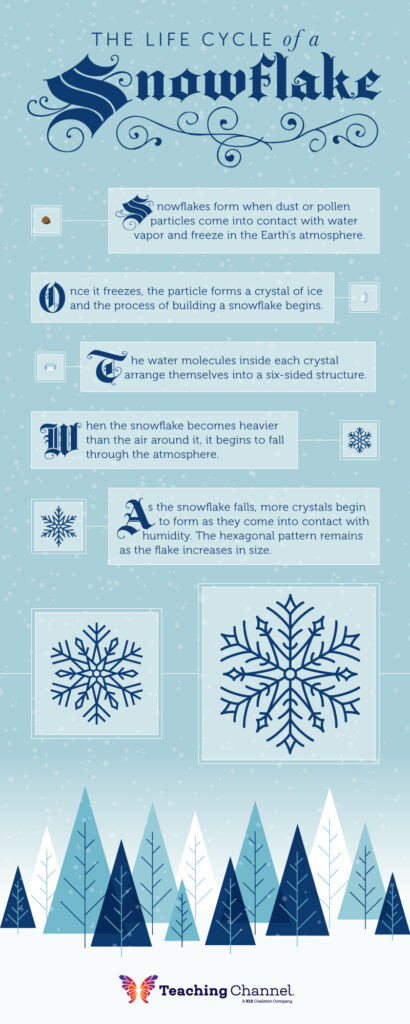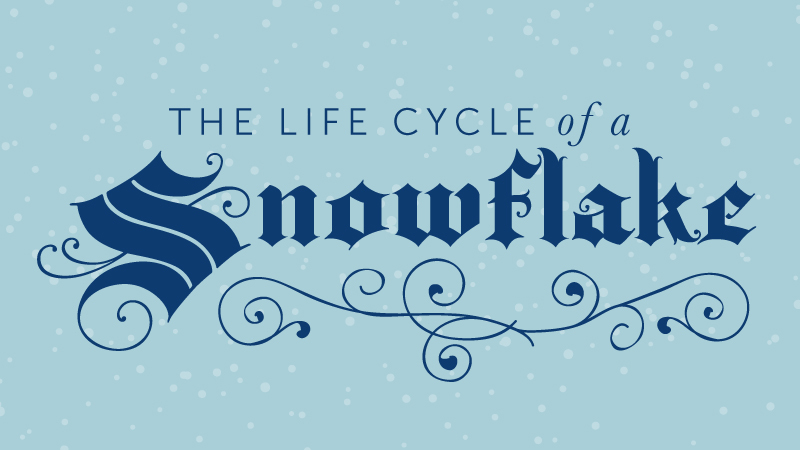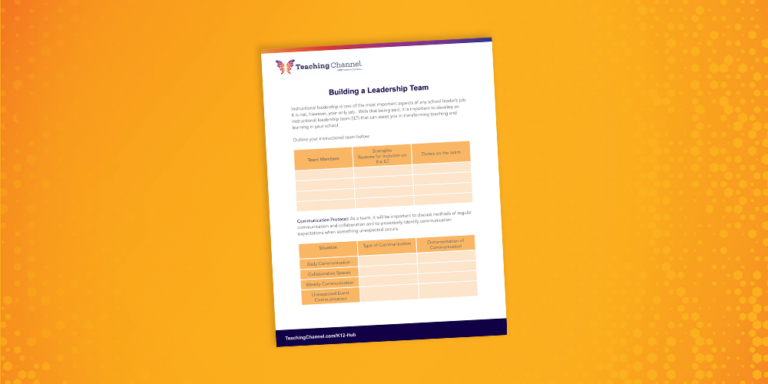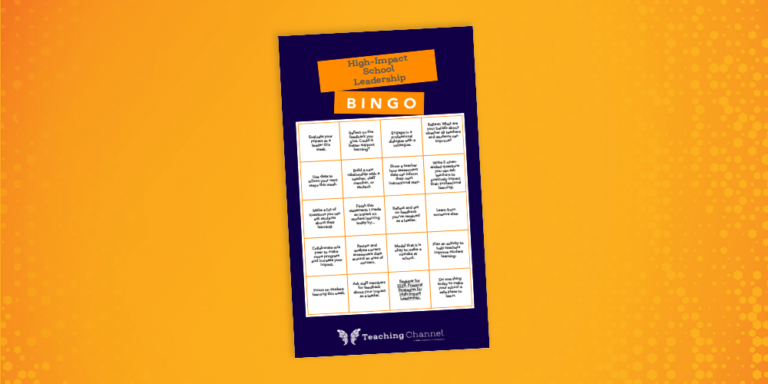During the winter months, snowflakes and the science surrounding them can serve as lesson plan inspiration for elementary students of all ages. Getting students involved with understanding the world around them is a great way to cultivate wonder through engaging learning experiences. From math concepts to diversity and more, there are many ways you can incorporate snowflakes into your classroom.
The Science of Snow
According to the National Oceanic and Atmospheric Administration (NOAA), snowflakes form when dust or pollen particles come into contact with water vapor and freeze high in the Earth’s atmosphere. When it freezes, the particle forms a crystal of ice and the process of building a snowflake begins. The water molecules inside each crystal arrange themselves into a six-sided structure. Because the snowflake is now heavier than the air around it, it begins to fall through the atmosphere and more crystals begin to form as they come into contact with humidity. The hexagonal pattern remains as the flake increases in size.
Even though all snowflakes have a hexagonal shape, the other geometrical details vary depending on the temperature and humidity when they are formed. This means that every snowflake is different, with unlimited variations. “They all tend to look unique, resembling everything from prisms and needles to the familiar lacy pattern,” the NOAA explains.
The crystals in snowflakes are symmetrical because water molecules arrange themselves into a predetermined order, or crystallization. And because each “arm” of the snowflake is formed under the same atmospheric conditions, the arms on each individual snowflake look identical despite being unique from all others.
Recommended Reading
Here are some snow-themed books you can share with your class and add to your classroom library.
- It’s Snowing by Gail Gibbons: This book is designed for learners in grades K-2. It provides a simple introduction to snow, as well as the different types of snowstorms, regions that experience snowfall, and more.
- Curious About Snow by Gina Shaw: This book, which is part of the Smithsonian’s nonfiction series, is ideal for students in grades 1-3. It answers questions related to why it snows, why snow is white, and other introductory inquiries that learners might have. It also features full-color photographs of real snowflakes so that students can see the structure up close.
- Snowflake Bentley by Jacqueline Briggs Martin: This book is ideal for students up to grade 3. It highlights Wilson Bentley’s snowflake photography and the realization that each one is unique. By learning Bentley’s story, students see that science can lead to meaningful discoveries that impact how we see the world.
- The Story of Snow: The Science of Winter’s Wonder by Mark Cassino: This book, which is ideal for younger elementary students, gives students a closer look at the crystallization process. It also features photos of real snowflakes, along with instructions for catching your own.
Activities for the Classroom
The following are other ways you can include the science of snow into your lesson plans.
Start a Conversation About Diversity
Once students learn that each snowflake is different, it’s easy to transition to a discussion around diversity and acceptance. Have students draw a snowflake and compare their work with fellow classmates. Note that, just as each snowflake is different but beautiful, all people are special because of their differences.
Discuss Symmetrical Shapes in Nature
You can also use snowflakes to introduce the geometrical concept of symmetry. This activity in particular is easy to scale up and down in difficulty depending on your students’ grade level. Using photos of real snowflakes, ask students to draw lines of symmetry and point out different shapes. You can also give students a half-image of a snowflake and task them with drawing the other side symmetrically, to ensure concept mastery. Also point out other examples of symmetry in nature, such as leaves and butterflies.
Keep a Snow Journal
Keeping a journal is a great way for students to build strong writing skills, and a snow journal introduces the scientific concept of observation. Have students record the date, time, and amount of snow, as well as the temperature outside when snow falls.
Catch Snowflakes
To see snowflakes up close, create a viewing platform from black construction paper, freeze magnifying glasses, and have students catch a few flakes. If resources are limited, you can also catch the flakes yourself and share them with the class, which only requires one magnifying glass. Just be sure to move quickly, so the snow doesn’t melt!







